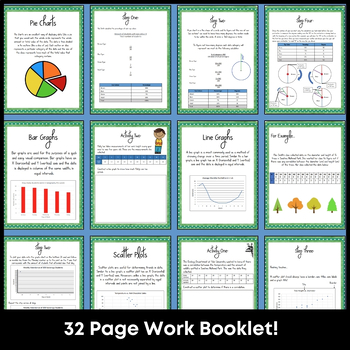Guide to graphs: Pie charts, bar graphs, line graphs, scatterplots + activities
- Zip
What educators are saying
Description
This is a fantastic resource for introducing students to graphing and data representation. This booklet will take students through the uses for particular graphs and how to construct them. At the end of each module, there are activities for students to complete, to practice their graphing skills. Answer key is included, making this a no-prep activity.
This booklet covers:
- why we visually represent data
- pie charts and how to create them
- bar graphs and how to create them
- line graphs and how to create them
- scatter plots and how to create them
- correlation - recognising trends
- line of best fit
- example scenarios and step-by-step instructions
- graphing activities
Students can hold onto this booklet for future reference, throughout their school life. Suitable for maths, science and geography studies.
Thank you for downloading! Your feedback is greatly appreciated!




